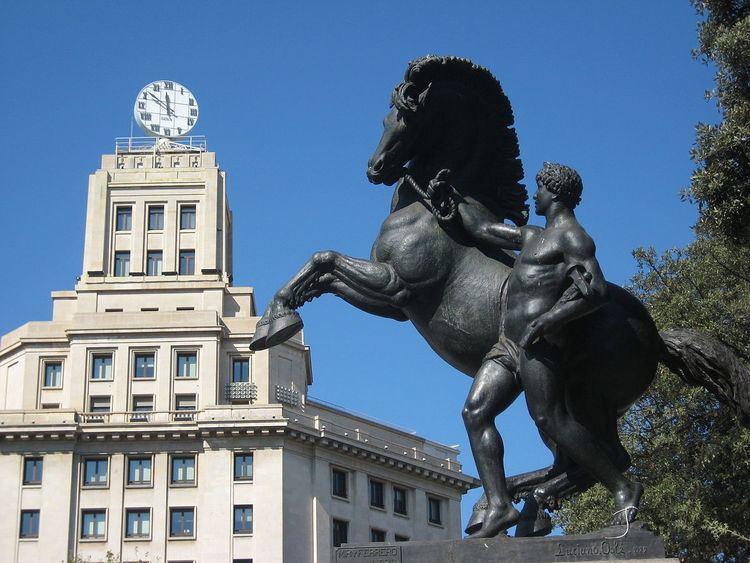 | ||
Address Plaça de Catalunya, 08002 Barcelona, Spain Similar Casa Batlló, Gothic Quarter - Barcelona, Sagrada Família, Casa Milà, Montjuïc | ||
Pla a de catalunya barcelona spain
Plaça de Catalunya ([ˈpɫasə ðə kətəˈɫuɲə], meaning in English "Catalonia Square"; sometimes referred to as Plaza de Cataluña, its Spanish name) is a large square in central Barcelona that is generally considered to be both its city centre and the place where the old city (see Barri Gòtic and Raval, in Ciutat Vella) and the 19th century-built Eixample meet.
Contents
- Pla a de catalunya barcelona spain
- Pla a de catalunya
- History
- Sculpture
- Decorative arts
- Theatre
- Cafs and restaurants
- Shopping centres
- Hotels
- Financial institutions
- Foreign relations
- Transport
- Metro
- Day bus
- Nitbus
- Train
- In popular culture
- References
Some of the city's most important streets and avenues meet at Plaça Catalunya: Passeig de Gràcia, Rambla de Catalunya, La Rambla or Portal de l'Àngel, in addition to Ronda de Sant Pere, Carrer de Vergara or Carrer de Pelai. The plaza occupies an area of about 50,000 square metres. It is especially known for its fountains and statues, its proximity to some of Barcelona's most popular attractions, and the flocks of pigeons that gather in the centre.
Pla a de catalunya
History
After the medieval city walls were demolished in the 19th century, ambitious designs for the city's public spaces were conceived under the guidance of notable urban planners. Plaça Catalunya was conceived as part of pla Rovira in 1859, but no official permission from the government was given until the 1888 Universal Exposition. It was urbanised for the first time in 1902 and was further modified in 1929, on the occasion of the 1929 Barcelona International Exposition, which also included the construction of a metro station. Architect Francisco Nebot designed the changes made in 1929.
In May 2011 Plaça Catalunya was the main location where anti-government protests and sit ins were held in Barcelona, mirroring the events in other Spanish cities.
Sculpture
Plaça Catalunya hosts quite a few interesting sculptures representative of Noucentisme, Neo-Classicism and different avant-garde movements.
Decorative arts
The mosaics that decorate the walls of the underground part of Plaça Catalunya were designed by pupils of Escola Massana.
Theatre
A few theatres have been established in Plaça Catalunya since its construction, none of which are extant.
There still are, however, other theatres in the nearby area, located in other streets or squares.
Cafés and restaurants
Similarly, most of the cafés and restaurants where writers and artists would meet in the city haven't survived, with the notable exception of Café Zurich, where Fabiola of Belgium's brother worked as a pianist. The following ones disappeared with the Spanish Civil War:
Shopping centres
Hotels
Financial institutions
Foreign relations
Transport
The square is also one of Barcelona's most important transport hubs, both above and under ground.
Metro
The original Barcelona metro line in Barcelona, known as Gran Metro, had Plaça Catalunya as one of its termini. It went to become the current green line, L3, operated by TMB. It's also served by two FGC lines.
Day bus
Nitbus
Barcelona's night bus is known as Nitbus and most of its lines serve Plaça Catalunya:
Train
In popular culture
Plaça de Catalunya is a featured locale in the 2009 video game Wheelman, published by Midway Games.
